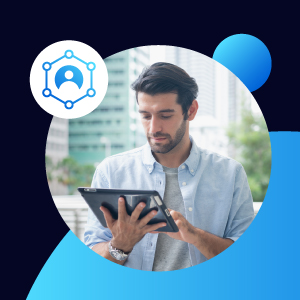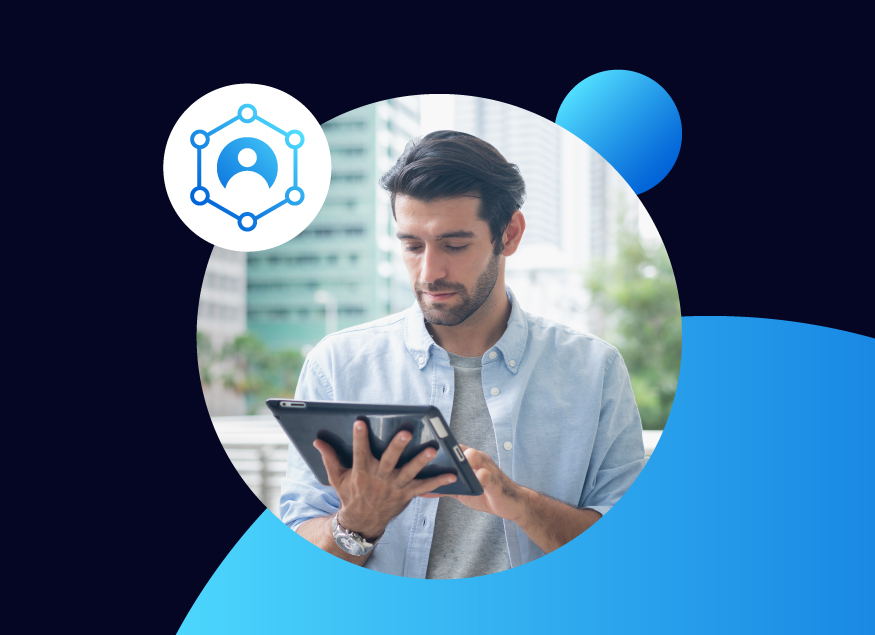Cybersecurity, automation, data analytics and the cloud can improve customer experience (CX) and increase trust in Public Sector institutions. At the 2025 CX and Engagement Summit, thought leaders and Government officials from the U.S. Department of State, the Department of Labor, the U.S. Coast Guard and more, discussed how technology and CX go hand in hand.
As Public institutions work to strengthen their CX, Carahsoft and our partners, such as Box, are here to help guide and support their journey.
Automation and Analytics for CX
Data analytics can be critical to improving CX and overall agency and organization efficiency. In the session “Leveraging Automation and Analytics to Enhance Customer Experience,” speakers Manny Medrano, the Director of Cybersecurity Monitoring and Operations at the U.S. Department of State, Dan Bauer, Former Chief Technology Officer (CTO) at the U.S. Department of State and Angy Peterson, the Vice President for Experience Services at Granicus, discussed the many uses of automation and data analytics. Medrano recommends keeping in mind key questions, such as “how is this improving our operations?” and “are we delivering on our mission?” With these framework questions in mind, agencies can better connect data to everyday processes and fulfill day-to-day organizational goals.
Automation can be used to pull more data to improve accuracy and trust in Public systems. Bauer explains that with automation, agencies and organizations can eliminate manual touchpoints, enabling faster, more accurate service delivery. When paired with analytics, automation helps provide insight into system performance. For example, agencies tend to review feedback surveys for dissatisfied users only. With automated analytics, agencies can gather and review analytics that provide the full emotional and behavioral picture. Leadership can also use analytics to locate process steps that are taking an extraneous amount of time, revealing organizational bottlenecks or gaps. By utilizing data and asking the right questions, organizations can refine technology and processes to improve CX.
Utilizing the Cloud for CX-Focused Integration

Users want services that adapt to them, not the other way around. At the panel “Cloud-Powered Customer Experience,” speakers Sanjay Koyani, the Former Executive Director of IT Operation and Services at the Department of Labor, and Kaitlin Klaum, the Senior Team Manager at Box, discussed meeting customer expectations with cloud technology. User experience (UX) must be a top priority to meet customer expectations that services be quick, easy and relevant. Leveraging the cloud helps agencies deliver on these expectations by enabling integration, automation and smarter use of data.
Replacing legacy systems can be expensive, so Koyani recommends agencies prioritize incremental modernization, allowing old and new systems to coexist where appropriate. Klaum asserts that security must be the starting point for any implementation, especially when onboarding new technology. By adopting Zero Trust frameworks, agencies can ensure information remains protected throughout the modernization process. Vendors play a critical role in this journey, partnering with agencies to onboard technology, solve problems and implement solutions that enhance performance.
Understanding Data Analytics for Mission Success
In the session “Data Analytics: Turning Insights into Impact,” speaker Trang Tran, the Deputy Chief Data Officer for Customer and Border Protection, Dan Allen, the Global Head of Customer Success Digital and Security Solutions at Hewlett Packard, and Captain Daniel Rogers, the Chief Data and Artificial Intelligence Officer of the U.S. Coast Guard, discussed understanding data to ensure optimal employment.
Tran emphasized that tying data to a clear mission statement ensures reliability, efficiency and effectiveness across an organization.
There are a few ways to promote data literacy across an agency:
- Educate employees on the purpose of data, so that they can interpret analytics with the agency’s mission statement in mind.
- Create an agency data office to support integration and to help teams understand their data and how to use it effectively.
- Build collaborative tools that improve decision-making and make data actionable items.
- Share data across agencies, like the Department of Health and Human Services (HHS) and the Department of Justice (DOJ), to enhance efficiency and effectiveness.
When equipped with data literacy, teams can drive more meaningful improvements to the customer experience.
Allen ties data analytics to mission fulfillment, positing that every team’s actions should be fulfilled through the lens of “how can I better accomplish my mission?” Success depends on every team member understanding the mission goal, regardless of their role. It is important to measure not just output, but the overall effectiveness of services and the CX delivered. Utilizing the right tools to analyze data, such as the latest in information technology, can extract meaningful insights and drive continuous improvement.
Rogers echoes this point, tying great CX to technology, as well as training, intuitive systems and a clearly defined process. By giving employees access to integrated tools and real-time data, businesses can streamline decisions and avoid silos. Accessibility tools, such as user-friendly interfaces and single-click actions, keep systems simple, while contextual help like built-in guides support user understanding. Using the same solution across an enterprise establishes a consistency that is recognizable to consumers. By utilizing data analytics to build on existing tools, agencies can reach customers and build trust.
Integrating Cybersecurity for Usability and Fortification
In the session “Balancing Customer Experience with Cybersecurity,” speakers Steven Boberski, the Public Sector Chief Technology Officer of Genesys, and Densmore Bartly, the Chief Information Security Officer (CISO) of the U.S. House of Representatives, discussed the integration of cybersecurity and CX. Boberski explains that security is not just technical; it impacts areas like hiring, operations and how people interact with systems. Modern technology- such as artificial intelligence (AI), automation and cloud computing- offer new opportunities to strengthen defenses and enhance CX. Tools such as speech-to-text, call summaries, smart recommendations and autofill enhance customer satisfaction, as well as security, by reducing steps and encrypting data throughout its lifecycle. Prioritizing cybersecurity safeguards both company infrastructure and customer information.
Bartly examines cybersecurity through the lens of Federal policies. While agencies must consider regulations, they can still subscribe to smart, secure policies. Cybersecurity and CX reinforce each other, and the ideal experience is a trifecta of security, functionality and usability. While implementing every best practice and new technology can be expensive, by focusing on customer priorities, agencies can pick the practices best suited for their business model and consumer base.
When choosing new technologies, agencies should follow this four-step process:
- Locate business gaps
- Define customer needs
- Apply new technology
- Layer in risk mitigation
Each of these steps lays a stronger foundation for adoption, and when paired with features that communicate a secure, protected experience, they help agencies earn the trust of both employees and customers.
Through the integration of cybersecurity and CX, agencies can deliver on both customer safety and satisfaction, reinforcing confidence in Public institutions.
To learn more about the topics discussed at the 2025 CX & Engagement Summit, view the session recordings, on-demand. To learn more about the technologies that can help meet your agency’s mission statement, take our Carahsoft’s CX Buyer’s Guide Quiz, or visit our CX and engagement solutions portfolio.






